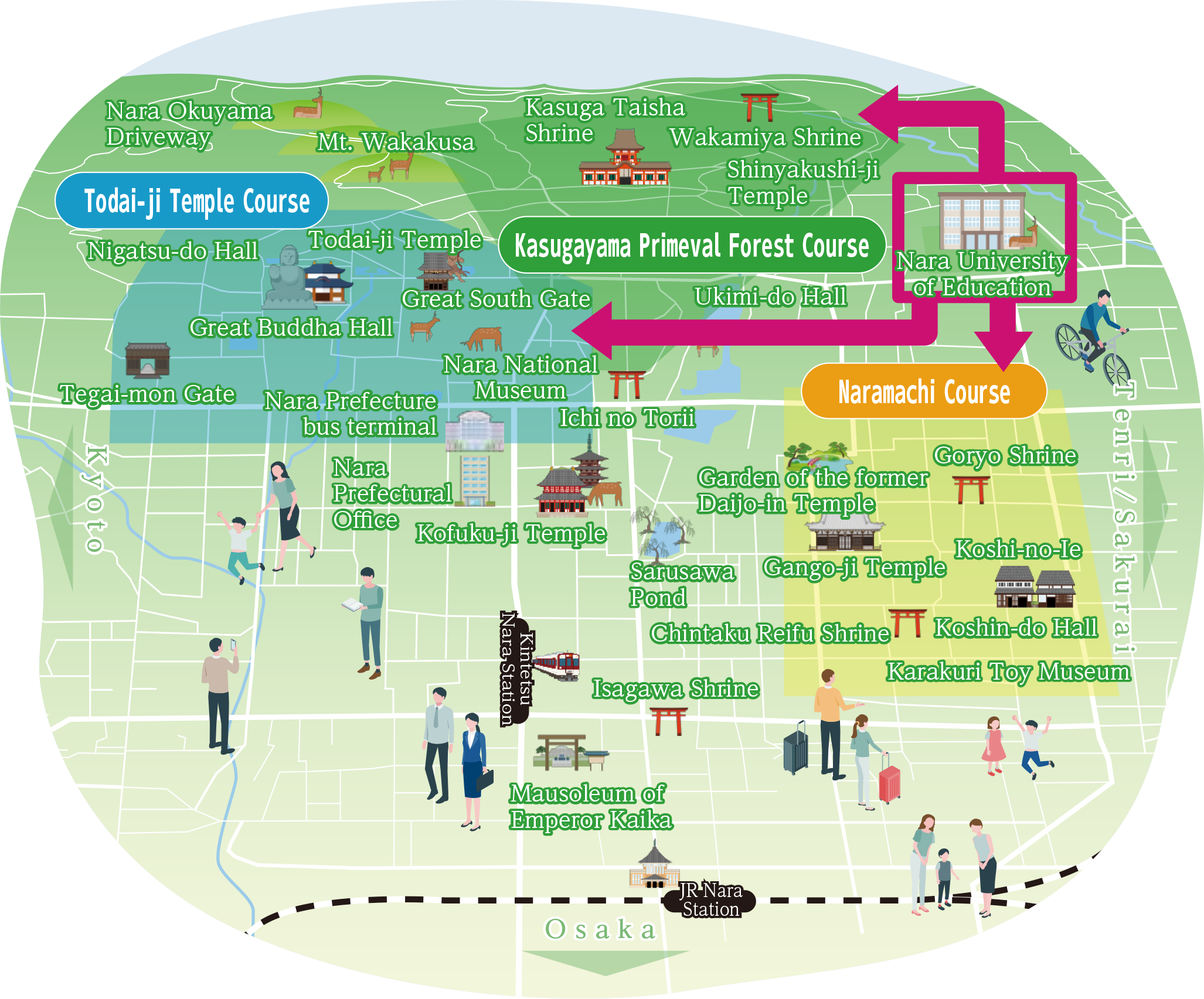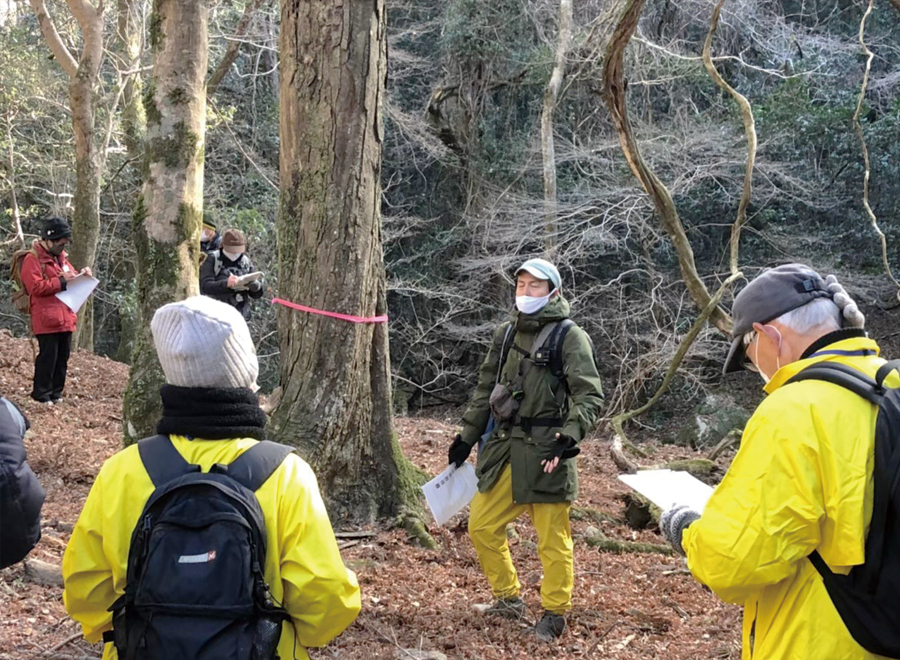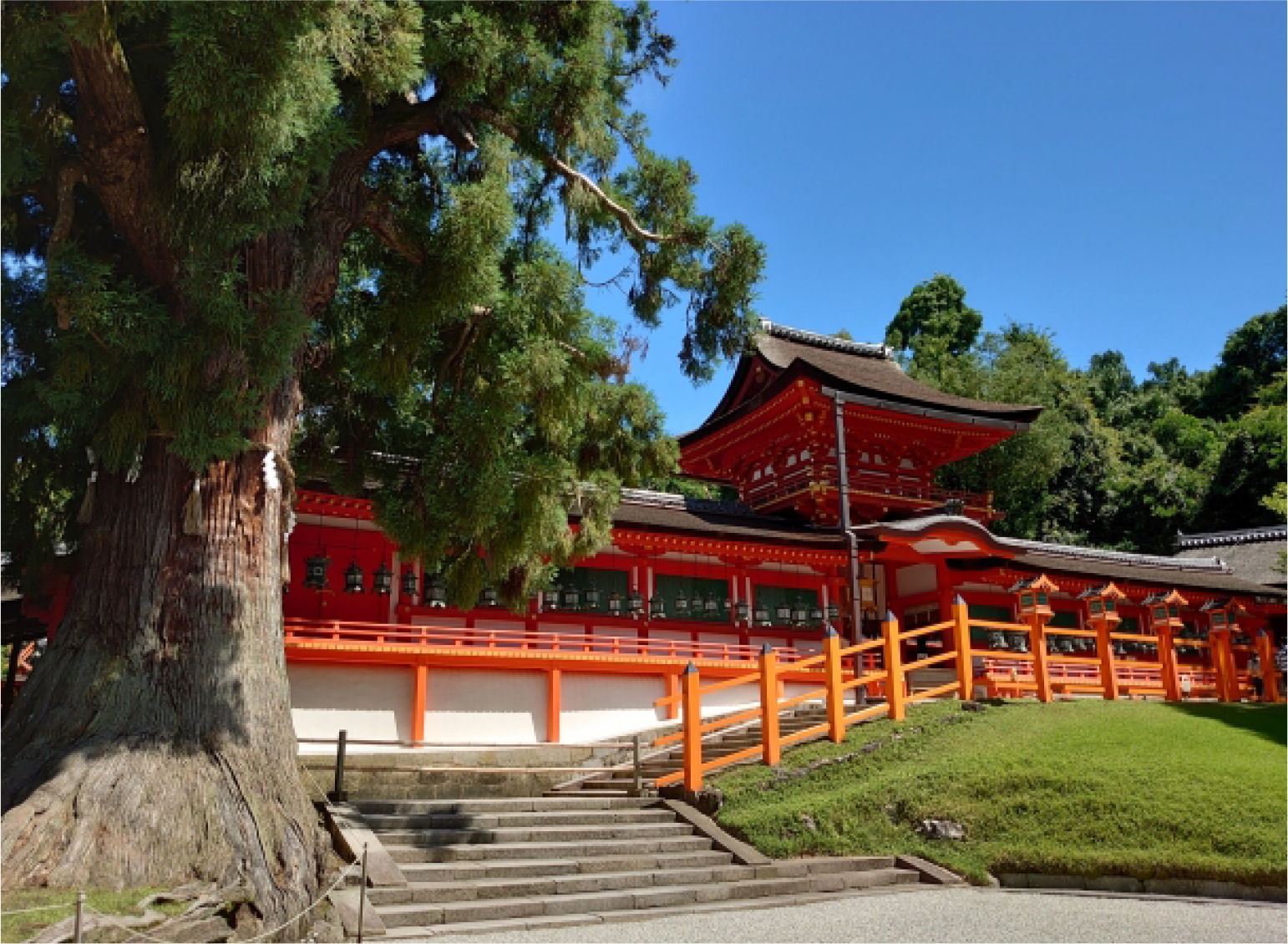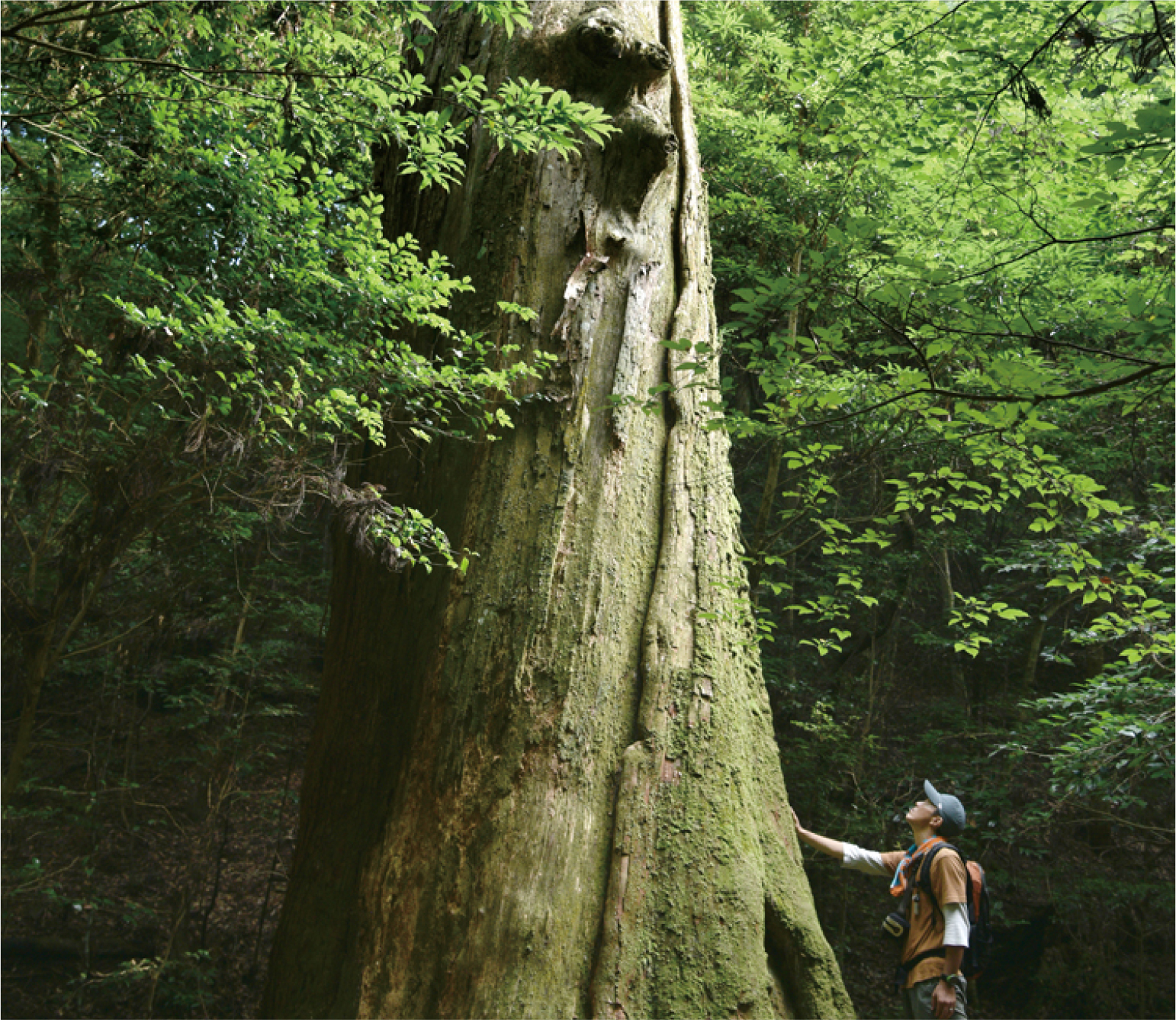

EDUCATIONAL TRAVEL
Small group
activities
Different areas
and times to
avoid crowds

01
The Nara Period, during which the Great Buddha of Todai-ji Temple was built, was a difficult time, with smallpox, major earthquakes, and tense relations with the Tang Dynasty and Silla. To make times like it better, Emperor Shomu called for the construction of a large Buddha statue.
His edict for the erection of a Great Buddha Image in 743 states his wish for the prosperity of all plants and animals. We can see that he wanted to create a world in which all living things, not just humans, flourish.
In addition, when the Great Buddha statue was built, Emperor Shomu decided not to build it with his great power (authority) but instead established a policy of building it by combining the small power of private individuals. It is recorded that a total of 2.6 million people cooperated, including engineers with immigrant roots and Gyoki (a Buddhist monk of the Nara period). This spirit was passed down and remained during reconstruction from the damage caused by two later wars.
02






This primeval forest within walking distance of the prefectural office contains large numbers of chinquapins, oaks, and other broad-leaved evergreen trees, as well as cedars, firs, and other large coniferous trees, and still retains the scenery of an ancient forest. There are, however, some sunny spots in the forest. Those spaces were opened up by the trees that had been there falling down. Instead of the chinquapins and oaks that should grow there, ferns and Chinese tallows, which deer do not eat, grow in these spaces. In particular, the Chinese tallow is an invasive species that was planted as a street tree in the early Showa era. The trees are currently spreading not only on Mt. Kasuga but also throughout Nara Park, and this is becoming an issue. In addition, there is almost no other vegetation growing on the ground, and the roots of the trees are exposed. Nara Prefecture promotes conservation activities in collaboration with researchers and citizen groups with the goal of promoting sustainable restoration of Kasugayama Primeval Forest, a valuable asset of the ancient capital of Nara, and conserving and restoring a forest that can coexist with people and deer.
※The guides arranged may include student guides who have completed guide training organized by the Council.
03
Gango-ji Temple was very prosperous and among the Seven Great Temples of Nara, but it went into a temporarily decline after transfer of the capital to Heian-kyo. Naramachi has continued to exist to this day partly because its citizens and the temple, which was revitalized by faith in the mandala in Gokuraku-do Hall, were able to build a relationship in which they support each other and because Koshin-ko, a gathering to commemorate "Koshin-san," resulted in communication between citizens that led to the development of a mechanism in which everyone in the town helps each other. In addition to this, the area around the nearby Sarusawa Pond flourished as a post town for pilgrims to Ise, and various industries developed by the people who settled in Naramachi prospered greatly, so this area became the commercial and industrial center of Nara.
One other thing was the thick, widely spaced latticework known as "Nara lattice" that was characteristic of Machiya townhouses in Naramachi and designed not only to protect the houses from deer but also to prevent the deer from being harmed.
※The guides arranged may include student guides who have completed guide training organized by the Council.
INBOUND
04

There are many wild deer living in Nara Park.
Why do they live there?
The reason for this is the complex intertwining of various elements closely linked with Nara, including kami and Buddha, as well as powerful individuals.
During this tour, we will unravel them one by one and trace the story of the power relationship between kami and Buddha.
This route has not been finalized and is subject to change.
※This course is currently being prepared for sale.
05

Kasugayama Primeval Forest is located close to the urban areas of Nara City.
As it was considered a sacred place, hunting and logging were banned in the forest more than 1,000 years ago, and it still retains its rich natural beauty, earning it the nickname "the Forest of Big Trees."
It is deeply linked with the traditional religion in Nara since ancient times, but not many people know about this place.
This tour enables you to experience the charm of Kasugayama Primeval Forest, which is rarely talked about, with your whole body.
※This route has not been finalized and is subject to change.
※This course is currently being prepared for sale.